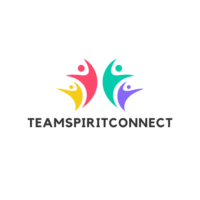As educational institutions increasingly embrace technology, students have access to a plethora of platforms designed to facilitate seamless collaboration. From shared documents to video conferencing, these tools cater to diverse needs and preferences. They empower students to work together in real time, fostering a sense of community and shared responsibility.
With the right online collaboration tools, students can easily manage tasks, share resources, and brainstorm ideas, all while developing essential skills for the future workforce. As they navigate this digital landscape, understanding the benefits and functionalities of these tools becomes crucial for academic success and beyond.
Online Collaboration Tools for Students

Effective online collaboration tools are essential for enhancing students’ academic experiences. Many tools offer unique features crucial for successful teamwork.
Students prefer intuitive tools with simple navigation. Features such as drag-and-drop, clear layouts, and user-friendly interfaces ease adoption and minimize learning curves. When tools are easy to use, students focus more on collaboration than on struggling with technology.
- Integration with Other Tools: Collaboration efficiency increases when tools integrate with existing platforms. Compatibility with learning management systems and popular software like Google Workspace, Microsoft Office, and Zoom streamline workflows. If these tools synchronize seamlessly, students manage tasks more effectively.
- Communication and File Sharing: Tools must support robust communication features and secure file sharing. Real-time messaging, video conferencing, and collaborative document editing ensure effective teamwork. Reliable security protocols and cloud-based storage enhance user trust and ease access.
Popular Online Collaboration Tools for Students
Students increasingly rely on online collaboration tools to enhance their educational experience. These platforms support effective communication and teamwork, making them integral to modern learning.
Google Workspace for Education

Google Workspace for Education offers various tools like Google Docs, Sheets, and Slides for real-time collaboration. Students can easily share and edit documents, enhancing group projects.
Integrated services such as Google Meet support seamless video conferencing, allowing virtual face-to-face interactions. The platform’s compatibility with various devices and its education-specific features make it a popular choice among schools.
Microsoft Teams
Microsoft Teams combines chat, video meetings, and file collaboration in one platform. Students can join class meetings, share resources, and collaborate on documents through integrated Office apps. The platform’s assignment management capabilities assist educators and students in tracking and submitting coursework efficiently. Its integration with other Microsoft services provides a cohesive learning environment.
Slack
Slack facilitates communication with channels dedicated to specific topics or projects. Students can use direct messaging and file-sharing features to collaborate effectively on assignments. Its integration with various educational apps and tools helps streamline the workflow. Slack’s notification system ensures students stay updated on discussions and deadlines, promoting structured interactions within study groups.
Evaluating Tool Performance and User Experience

Effective evaluation of online collaboration tools hinges on understanding their performance and user experience. Students can enhance their learning by selecting tools that excel in key areas such as usability and security.
A tool’s user interface affects student engagement and ease of use. Intuitive layout and clear navigation improve the learning experience by minimizing time spent troubleshooting. Accessibility features, like screen reader support and keyboard shortcuts, ensure students with diverse needs can participate equally in collaborative activities.
Robust security features protect sensitive student data during collaborative tasks. Tools with end-to-end encryption prevent unauthorized access, safeguarding research and personal information. Privacy policies, compliant with regulations like FERPA, reassure students and educators that their data remains confidential, fostering trust in digital collaboration.
Cost-Effectiveness of Collaboration Tools
Online collaboration tools offer a cost-effective solution for educational institutions and students alike. By reducing the need for physical resources and enabling virtual interactions, these tools help cut down on expenses associated with traditional classroom settings. They provide students with access to a wide range of resources and platforms without the need for costly software or hardware investments.
Moreover, many of these tools offer free or discounted versions for educational use, making them accessible to a broader audience. As technology continues to evolve, the affordability and accessibility of online collaboration tools will likely play a crucial role in shaping the future of education, empowering students to thrive in a connected world.

